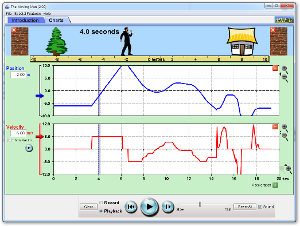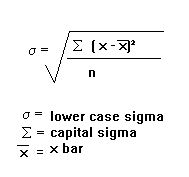We did a quiz and went revised what standard deviation is.
—
Standard deviation (σ is the symbol, is a measure of the variance from the mean for a set of data. It is calculated as follows:
x̄ (pronounced as x bar) is the mean of the data set.
n is the number of data in the set.
Σ, or summation, is the addition of all the following datum. In this case, it is (x-x̄)^2.
—
Showing the proper working during the examples is essential to getting the method mark(s).
For example,
Calculate the mean, median and standard deviation for the following set of data.
1,2,3
mean = (1+2+3)/3
= 3
Tmedian = (3+1)/2
= 2
median = 2
_________________________________
standard deviation = √( ( (1-2)^2 + (2-2)^2 + (3-2)^2 ) / 2 )
= 1
—
The standard deviation’s and mean’s working can be in the form of a table containing all the data, and you can just use the values of Σ(x-x̄), n and Σx to calculate your answers.
If there are UNITS in the question, be sure to write them down in your answers as well.
Other reminders:
- Write scale when drawing graphs
- Show ALL the working when calculating the standard deviation, mean and median.
Check out these G+ posts to learn how to use STAT functions in your calculator
https://plus.google.com/101616184095512416932/posts/19rLzDFWtzz
https://plus.google.com/101616184095512416932/posts/bucASRsM3jJ
p.s. Sorry for the late post!




















